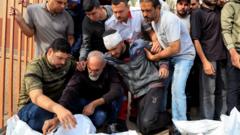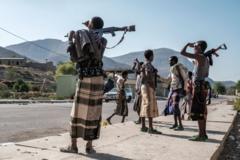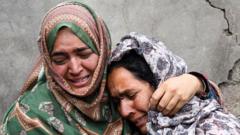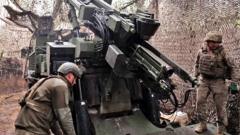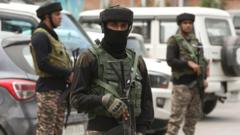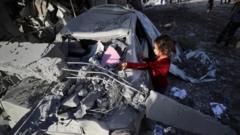The recent four-day conflict between India and Pakistan saw intense shelling along the Kashmir border, resulting in civilian casualties on both sides. The violence was triggered by a militant attack in India-administered Kashmir, prompting retaliatory strikes that killed and injured numerous innocents. A ceasefire was eventually brokered by the US after both nations exchanged missile strikes, threatening to escalate into a larger war.
Tensions Resurface: The Deadly Four-Day Conflict between India and Pakistan
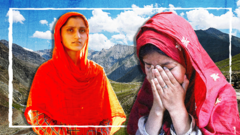
Tensions Resurface: The Deadly Four-Day Conflict between India and Pakistan
A recent flare-up of violence between India and Pakistan has left numerous civilians dead, raising fears of an escalation in their long-standing conflict over Kashmir.
In Pakistan-administered Kashmir, sixteen-year-old Nimra found herself caught in the deadly chaos as Indian missiles struck the mosque near her home. Not realizing she had been injured, she watched in horror as destruction unfolded around her, only to finally see blood on her dress as she sought refuge with her family. Meanwhile, in Poonch, Indian-administered Kashmir, 72-year-old MN Sudhan lamented the loss of his 13-year-old grandson, Vihaan, who was killed in a barrage of shelling that left families scrambling for safety.
The recent violence, marked by some of the deadliest attacks in years, has put the region's fragile peace on high alert. Neither India nor Pakistan has acknowledged targeting civilians, yet reports from the frontlines depict a reality of suffering. Nimra's injury stemmed from India's military response to a previous militant attack that killed 26 people, including many Indian tourists, which India claimed involved Pakistani nationals. Pakistan, however, has requested proof of this claim and demanded an independent investigation.
What followed were four harrowing days of retaliation, with both nations executing missile strikes and drone attacks, leading to unprecedented levels of despair among civilians. According to reports, at least 16 individuals died on the Indian side, while Pakistan cites over 40 casualties, although independent verification remains elusive. As tensions rose, the Indian government initially reveled in what it deemed successful strikes into Pakistani territory, contrasting with Pakistan's anticipation of such an attack and preparation for defense.
Communities on both sides of the Line of Control were caught unawares, with no evacuation orders issued. As shelling intensified, local populations found themselves trapped in a cycle of fear. Civilians like Hafeeza Khan suffered grievous losses, with her sister-in-law fatally wounded during a shelling attack as they attempted to flee.
As diplomatic efforts failed, the ongoing military escalation drew international attention. US Vice President JD Vance stated a potential conflict would be "none of our business," seemingly dismissing any significant intervention. Amid rising violence, the realization dawned on leaders that a slide into full-blown conflict could have catastrophic consequences, prompting a call for restraint.
Ultimately, on May 10, the crisis reached a turning point when US President Donald Trump announced the establishment of a ceasefire after intense negotiations. While both countries may downplay the extent of US mediation, analysts suggest that the looming threat of escalation played a crucial role in the turnaround. Moving forward, civilians who have borne the brunt of these clashes continue to call for peace and accountability from their governments, hoping to prevent future tragedies.
As the dust settles, the echoes of conflict remind us of the precarious nature of peace in a region long defined by strife.








